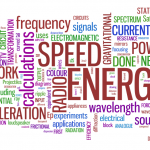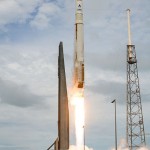Currently in physics land there is a push to merge computer science with physics. This idea is slowly starting to gather STEAM and the rewards of such a blend could have numerous benefits for everyone.
So, imagine this. You want to teach your kids mathematics…well because its fundamental…. But you also want to teach them physics… As we all know after all, physics is the chief STEM pathway. But somewhere in there we want to also teach a useful science that is the future, and that is computer science, or to be more precise coding….So what if there was a way to teach all three of these subjects in a way that taps into all their strong points and then provides a strong central framework for how laws of nature behave while at the same time giving kids a skill they will most likely need in the future as our technology advances. I present to you computational physics instruction.
Many school districts are adopting the Next Generation Science Standards, which require students to create, refine and use models – a central practice for scientists and engineers. The ability to use new technologies to “manage and make meaning from the large amounts of data they produce is becoming a defining feature of scientific work in the 21st century and thus critical to computational thinking in mathematics and science, underscoring the importance of developing computational thinking data practices in the classroom” [1]. According to many in the field, a blending of math, physics, and computer science is a natural progression of where we should be going. The question is how do we do it?
In 2017 I attended one of the very first computational modeling workshops at Columbia University in New York. In three weeks, I learned an entire new language as well as a means of teaching both physics and math. The problem was when I got back to Phoenix, I still was not good enough to make the material work for myself nor my demographic of students. I was defeated… However, I was lucky enough to also go to the space educators conference in Alabama that same summer and I was introduced to little programable robots called spheros. What I liked about the spheros was that unlike the pyret platform I had learned in NYC that was completely virtual, this format actually allowed for easier introductory block coding that my freshman could handle. It gave them an actual moving object to test their engineering and newfound coding skills on. I know to some it may seem elementary, but I found it a nice “hook” into coding before we got to the higher-level stuff. I started with the spheros as an entry way not just for the kids but also for myself so I could wrap my mind around the whole codification of physics thing. I can say in the last two years I started down this road, I have learned a ton and I see a future of blending of these concepts into something beautiful.
Today I have adapted and blended both systems into my instruction. I model both and have found that when kids get the chance to play with both of these systems, they really get something substantial from their integration with them. With the way todays tech culture is moving, I believe it is important that we find as many paths and outlets as possible to get kids locked into STEM. But more importantly I feel like I hit 3 birds with one stone and that’s a win I’ll take to the bank any day. My suggestion to anyone interested is to check out the next computational modeling workshop coming to the valley this summer. The info is on the ASU Physics Modeling Website, and the American Association of Physics Teachers Website. The class is also being led by one of Arizona’s NBCTs and an amazing human being the great Melissa Girmscheid. Her classes never disappoint. (2)
<1> D Weintrop E Beheshti, M Horn, K Orton, K Jona, L Trouille “Defining Computational Thinking for Mathematics and Science Classrooms, “Journal of Science Education and Technology vol 25, no 1 pp 127-147, Feb 2016
<2> https://aapt.org/K12/Computational-Modeling-in-Physics-First.cfm?_zs=oqkEW&_zl=hq5R1










Comments 2
Thank you! I will share! We are adding AP Physics next year as more and more students are wanting to take advanced levels of physics.
How often does that happen – that you get 3 wins at once. And that transfers into so many benefits for your students. The cool thing is that the facets don’t complement each other but magnify each other. Great job!